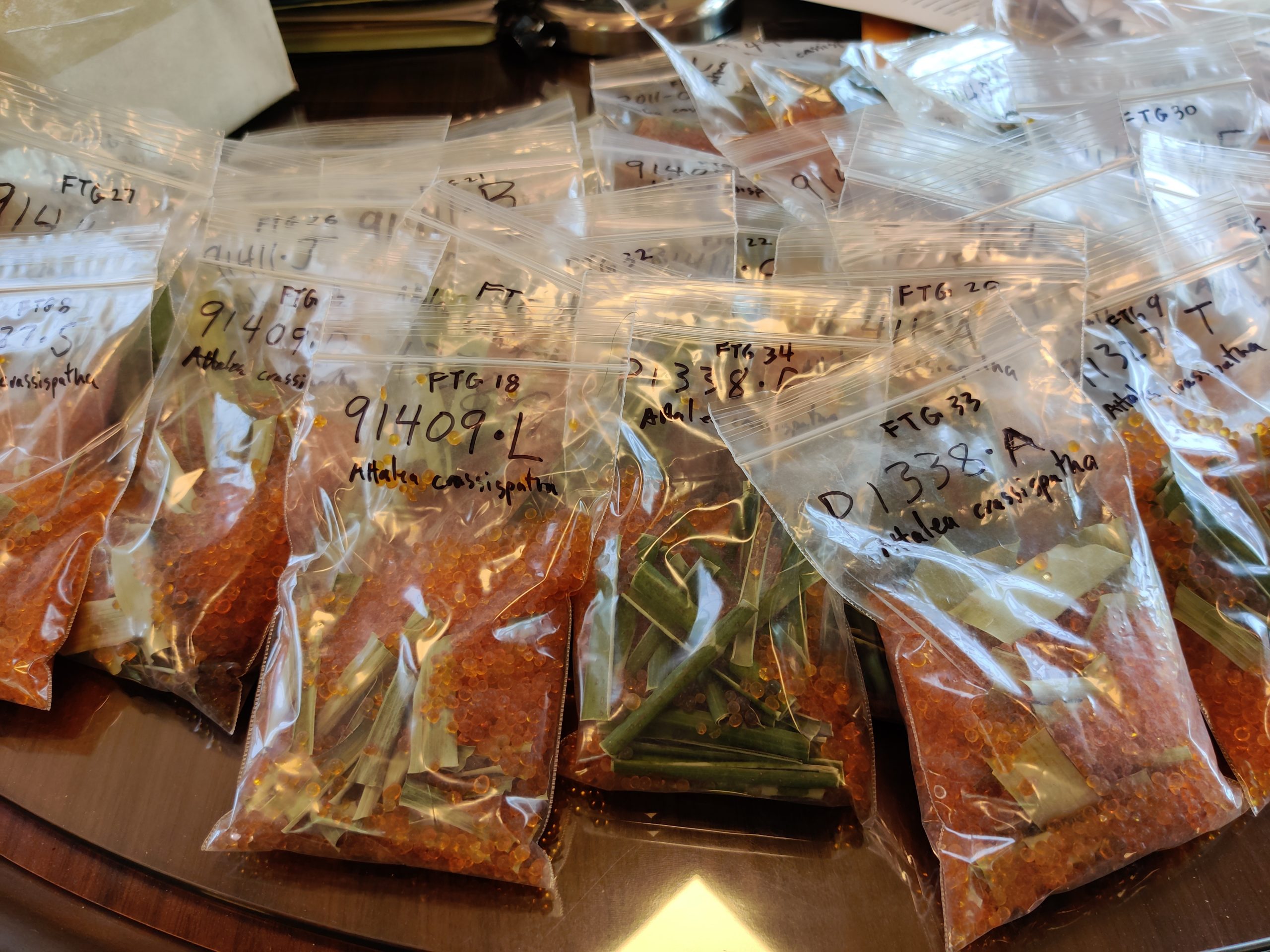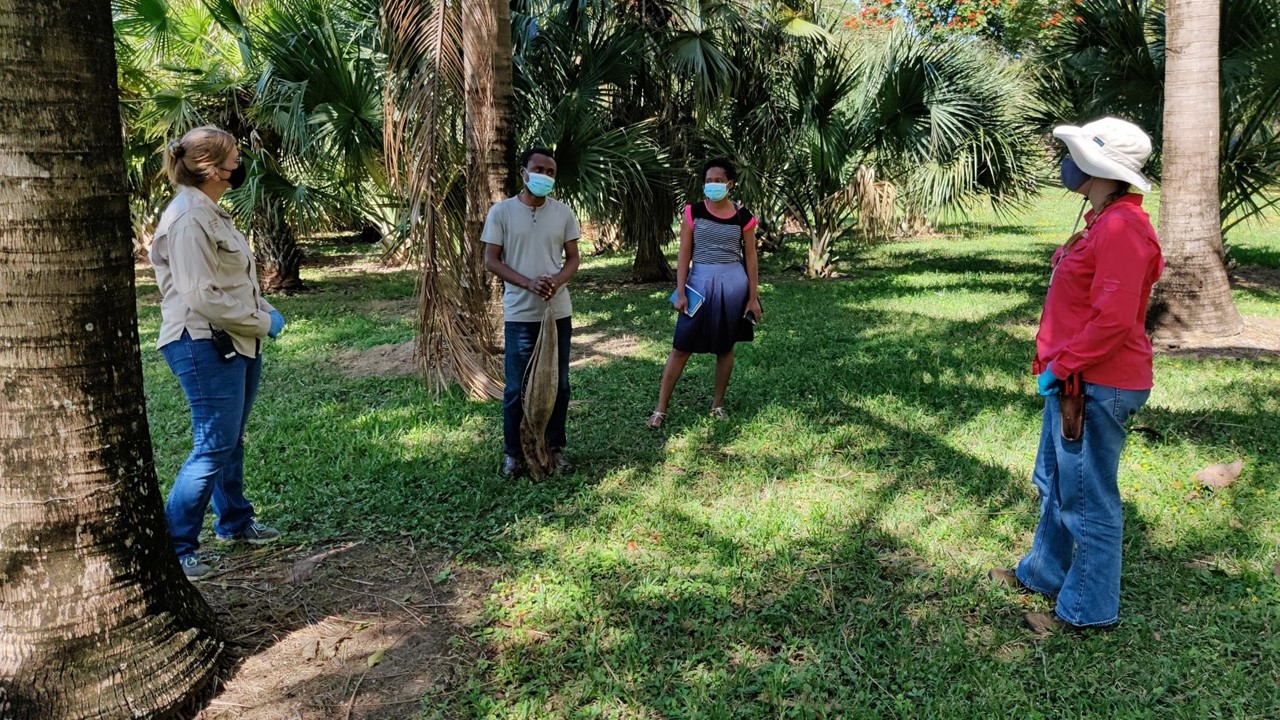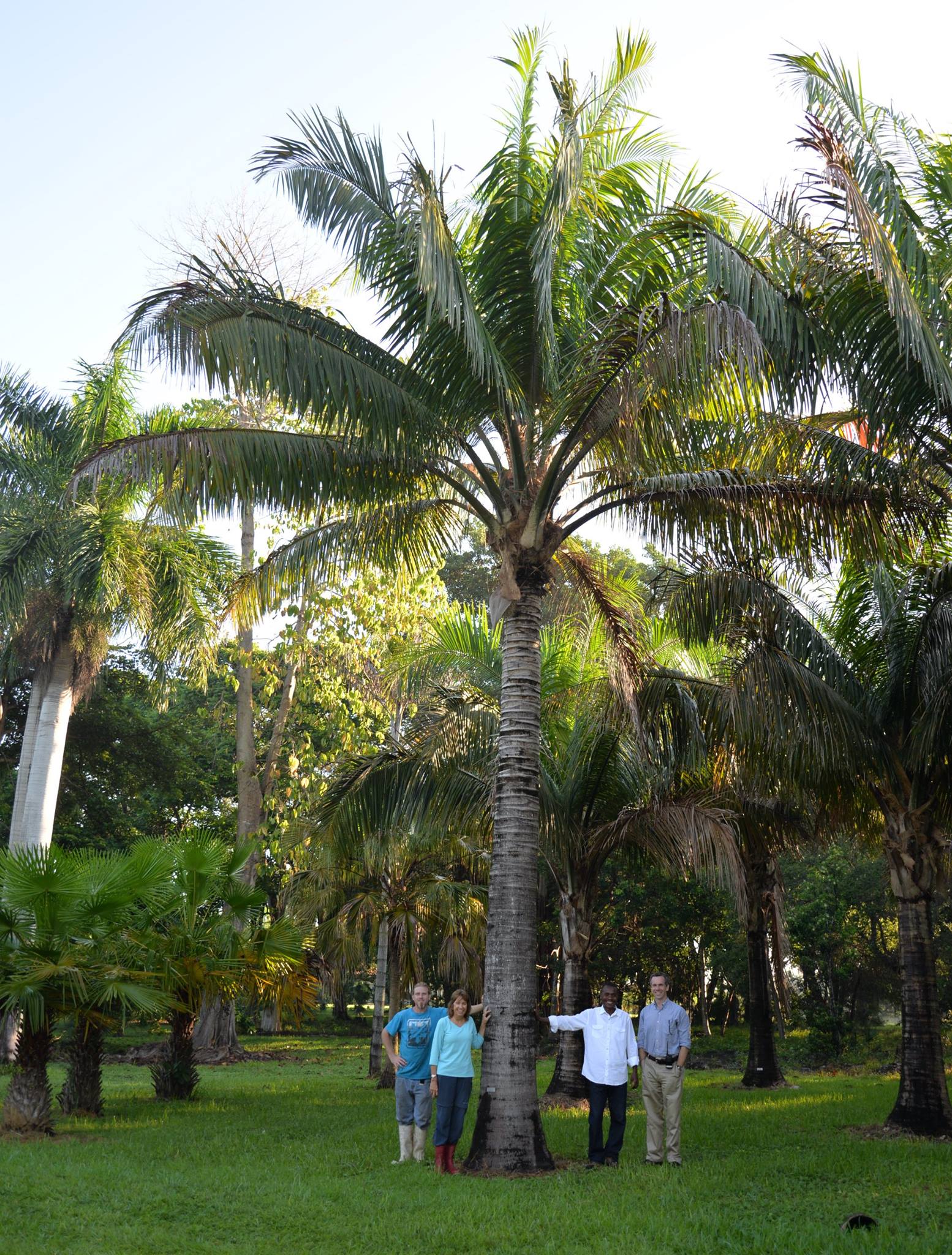Are We Related? Delving into Genetics to Build a Palm Breeding Program
In the southern peninsula of Haiti, just over one dozen carossier palms (Attalea crassipatha), one of the rarest palms in the Americas, remain in the wild. All the trees are mature, and there appears to be no natural recruitment of new seedlings. Fortunately, in the 1990s botanists collected seeds from carossier palms and sent them to botanical institutions. This act may help the rare palm persevere into the future — but only if all the remaining plants can be managed as one population, no matter where they are found. Montgomery Botanical Center (MBC) and Chicago Botanic Garden (CBG) are pulling together the information that will help the botanical institutions holding ex situ collections and conservationists in Haiti to do just that.
Historically, management of the species was largely passive – trees were left to reproduce with other individuals at each institution without oversight or intervention. Most seeds produced and shared as a result of the breeding between just a few individuals. Now MBC and CBG are adapting zoo studbook management software (PMx) to manage exceptional plant species like this rare palm. Initial efforts include developing a PMxceptional program and working with several species to determine the best way to integrate the program in conservation management for plants. MBC executive director, Patrick Griffith, Ph.D., points out that carrosier palms are not only a perfect candidate for its use, but that they provide a great model to guide the management of other species.

As a first step, the program needs information on the relatedness of all individuals to be bred and managed. Zoe Diaz-Martin, Ph.D., a postdoctoral fellow at CBG, has generated genomic data on the remaining carossier palms. In addition to the wild palms, 60 palms spread across five botanical institutions remain from seed sent to them in the 1990s and 14 individuals comprising a captive-born generation were included in the study. Using next-generation sequencing to genotype the palms, Zoe delved into the levels of genetic diversity found in the wild population, the founders, and the first generation of captive-born individuals. Identifying levels of diversity and inbreeding will help guide management of the palms to keep the captive population genetically robust, and ideally enable the development of optimal plant material for reintroduction.
While still refining the relatedness table needed for the PMxceptional software program, Zoe has found some interesting results. First, a subset of the captive-born plants appear to be extreme genetic outliers. They could not be matched to father plants and may be hybrids — or even a different species included in the study as a result of mislabeling. Overall, the captive-born population shows significantly lower genetic diversity and significantly more inbreeding than either their founder parents or the wild population. Both of these results highlight the need for the software as well as a more active hand in managing carossier palms.
The team also wanted to know the extent to which the founders of the garden population were representative of the wild population. Many of the garden trees could not be matched to wild mothers or fathers or both. This means that the native populations may yet harbor some diversity not represented in gardens; therefore additional collections from Haiti could bolster the ex situ collections. And, although the parents of these unmatched founders appear to have been extinguished, their progeny in the collections can contribute more genetic diversity to the wild. Botanists in Hawai’i have been creative and innovative in their use of drones for conservation work, and it is conceivable that drones could be used to pollinate the wild palms in Haiti with pollen from captive founders or their offspring. A reintroduction may also benefit from selecting plants with founders of unknown parentage. These approaches would truly involve managing all of the carrosier palms as one population, ideally using the PMxceptional program as the guide.


Enacting the guidelines from the breeding program will require extensive coordination. The gardens have already begun this cooperation, working together to get the project started and sharing genetic samples and collection data. Most of the gardens are located in Miami – MBC, Fairchild Tropical Botanical Garden, the Tropical Resource and Education Center at University of Florida, and Chapman Field (USDA ARS Subtropical Horticultural Research Station). The Singapore Botanic Gardens is also on board, as well as conservationists in Haiti – particularly William Cinea at the Cayes Botanical Garden (Jardin Botanique des Cayes).
The carrosier palm project and plant studbook work highlight how a collaborative framework can advance conservation. Conservation through collaboration offers both hope and practical pathways for this critically endangered palm, as well as many other endangered species, to flourish in the future.